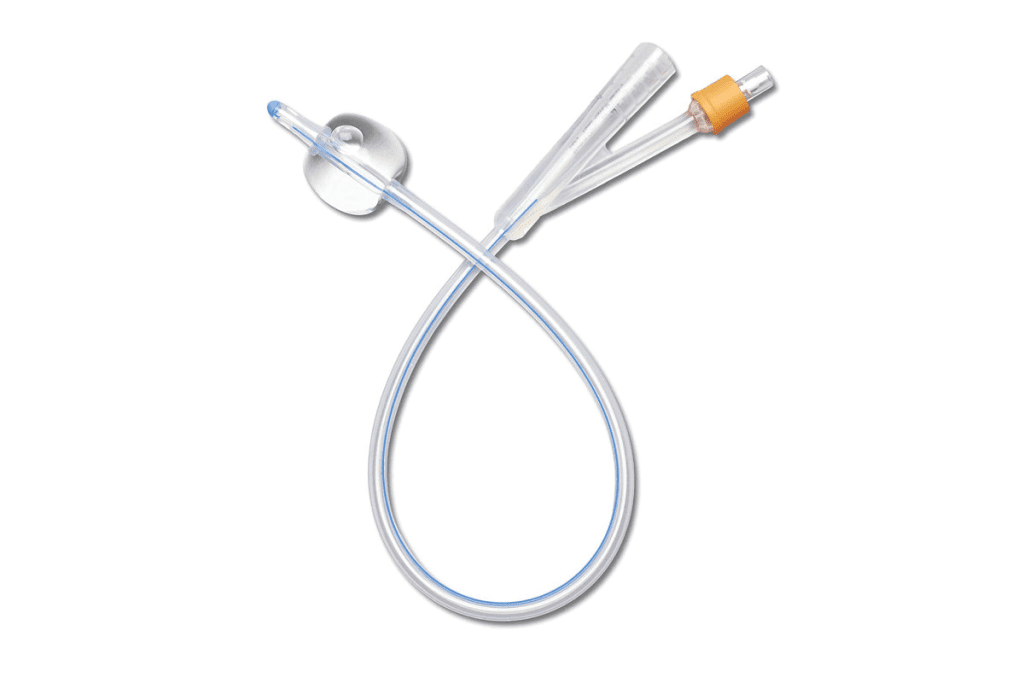Last Updated on October 31, 2025 by

After prostate removal surgery, patients often need a urinary catheter. This helps manage urine while they heal. Doctors carefully plan how they operate prostate procedures to ensure the best outcomes.
At Liv Hospital, we focus on top-notch medical care and support our patients every step of the way. A Foley catheter is usually used for 1“2 weeks after surgery, and patients leave the hospital with it.
We follow advanced care plans to reduce complications and improve recovery. Our team teaches patients how to care for the catheter at home, including using a collection bag, after they operate prostate.
Learning about prostate removal surgery can help ease worries. This surgery, called prostatectomy, removes the prostate gland. It uses new methods to cut down on recovery time.

The surgery carefully removes the prostate gland. It tries to keep the surrounding tissues safe. It’s a complex procedure that needs a skilled surgeon and a top-notch medical facility.
The surgery details can change based on the case and the method used. Usually, small cuts are made in the abdomen. These tools and a camera help remove the prostate gland.
After surgery, patients are watched for any issues. They get pain medicine as needed. Using urinary devices after surgery is a big part of recovery.
Many worry about needing a Foley catheter after prostatectomy. But the catheter is usually connected to a leg bag or a bigger bag at night. It’s not as scary as it sounds.
We clear up these misunderstandings. We tell our patients these devices help with healing and comfort during recovery.
Recovery means dealing with a urinary catheter and possibly temporary incontinence. It’s key to know these issues are short-term. Most people get their urinary control back.
We give our patients all the help and support they need. We make sure they know how to manage their condition. This helps them get the best results.
After prostate surgery, a temporary catheter is often needed. It helps the urethra heal. We know it can be worrying, but it’s key for healing.
A Foley catheter is used after prostate removal surgery. It helps the urethra heal. The catheter is connected to a collection bag that holds urine. This lets the urethra heal without needing to urinate right away.
The Foley catheter is a common practice after prostate surgery. It usually stays in for about 1 to 2 weeks.

The collection bag comes in different sizes for day and night. A bigger bag is used at night for better drainage. A smaller leg bag is better for daytime activities.
This setup lets patients move around more easily. The collection bag is needed for about 1 to 2 weeks, matching the time the Foley catheter is in place.
Living with a temporary catheter and collection bag needs some adjustments. But with the right help, patients can manage well. At Liv Hospital, our team gives detailed instructions on caring for the catheter and collection bag.
We also offer support and advice on avoiding complications and managing any discomfort. By following our advice, patients can keep their daily activities as normal as possible.
Removing the catheter is a big step in recovery. But it also brings new challenges. Patients want to get back to normal, but they might face some hurdles.
After the catheter is out, the body starts to adjust to its natural way of urinating. This time can be tough, with temporary incontinence being a common problem.
We know this can be hard for our patients. But it’s good to know that most men get better in a few weeks to months.
How long and how bad incontinence is can differ a lot. Things like how big the surgery was, your health, and doing pelvic floor exercises can affect how fast you get better.
We tell our patients to keep up with their pelvic floor exercises. They really help in getting back to normal.
To deal with incontinence, we suggest using incontinence pads and special underwear. These can make you feel more comfortable and secure.
Our team is here to help you through this. We’ll guide you on the best products and ways to handle incontinence.
Knowing what to expect and how to manage your urinary function after the catheter is removed can make a big difference. We’re committed to helping you get back to your best life.
Recovering urinary control after prostate surgery is a journey. It involves understanding treatment options and what to expect long-term. At Liv Hospital, we provide care that meets both immediate and long-term needs. Our goal is to improve our patients’ quality of life.
Studies show up to 90% of patients see big improvements in urinary symptoms after surgery. This highlights the importance of knowing what helps recovery.
We watch our patients closely. We look for those who might need extra help or treatments to aid their recovery.
While most patients improve, some face ongoing incontinence issues. We look at age, health, and surgery extent to identify risks.
Knowing these risks lets us tailor treatments. This increases the chance of long-term urinary control for each patient.
For those with ongoing incontinence, we have advanced treatments. These include pelvic floor rehabilitation, behavioral therapies, and sometimes surgical interventions.
We aim to give personalized care. This ensures the best outcomes for urinary control and overall life quality.
With these treatments and support, we help our patients face prostate surgery recovery with confidence.
Recovering from prostate removal surgery needs careful management and support. At Liv Hospital, we offer complete care for our patients. This care goes from the start of recovery to managing long-term urinary issues.
We focus on each patient’s unique needs with empathy and understanding. Follow-up care and support are key, even with managing a urinary catheter. This is very important during recovery.
Choosing Liv Hospital means getting top-notch medical care. Our team is all about helping patients recover well. We aim for the best outcomes and quality of life for our patients.
A Foley catheter helps with urine drainage after prostate surgery. It lets the urethra heal. It’s usually kept in for 1-2 weeks.
The collection bag comes in sizes for day and night. Use a smaller leg bag during the day for ease. A larger bag is for nighttime to catch more urine. Our team will teach you how to take care of it.
No, the Foley catheter and collection bag are only temporary. They help with healing and comfort. They are removed in 1-2 weeks after surgery.
After the catheter is out, you might leak urine at first. This is usually temporary. Most men get better in a few weeks to months. We suggest using incontinence pads and special underwear. We also recommend exercises to help control urination.
Most men see big improvements in controlling their urine. But it can take longer for some. We look at risk factors for longer incontinence. We also talk about treatments like exercises, therapies, and surgery for ongoing issues.
The outlook for long-term urinary control is usually good. Most men see big improvements. For those who struggle, we offer advanced treatments to improve their quality of life.
Yes, with the right care, you can live your daily life as usual. Our team will guide you on caring for the catheter and bag. This makes recovery easier.
Common side effects include leaking urine and needing a temporary catheter. But most men get better in a few weeks to months. We talk about these side effects and how to manage them.
Follow our team’s advice on catheter care and do pelvic floor exercises. This can lower the risk of problems and help your recovery.
Bhatta, P., et al. (2021). Median duration of hospital stay after early removal of Foley’s catheter among patients undergoing transurethral resection of prostate: A descriptive cross-sectional study. Urology Journal, 18(4), 350-355. https://www.ncbi.nlm.nih.gov/pmc/articles/PMC9107867/
Subscribe to our e-newsletter to stay informed about the latest innovations in the world of health and exclusive offers!